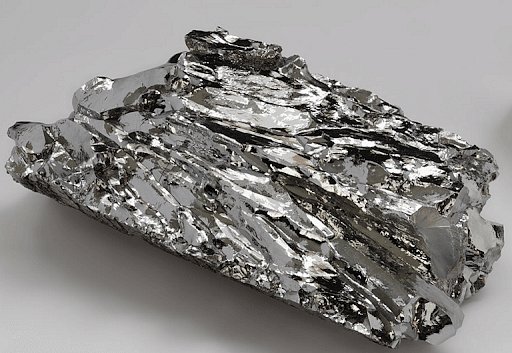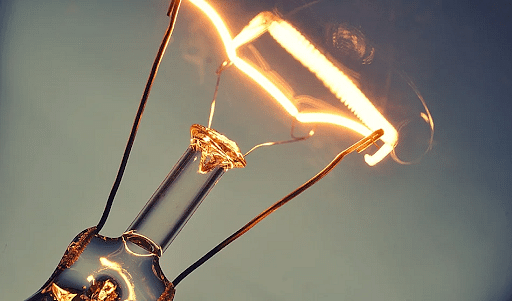Jasmine Grover Content Strategy Manager
Content Strategy Manager
Tungsten or wolfram is an important chemical element with an atomic number of 74. It was identified as a new element in the year 1781 and first isolated in the year 1783. Tungsten is a free element that is remarkable for the fact that it has the highest melting point of all the elements containing carbon. Tungsten is a metal with many alloys and numerous applications.
| Table of Content |
Key Terms: Tungsten, Elements, Atomic Number, Isotopes, Metals, Oxidation State, Melting Point, Vapour Pressure
What is Tungsten?
[Click Here for Sample Questions]
Tungsten is a chemical element with an atomic number of 74 and the symbol W. Tungsten is known to be the heaviest metal with a known biological role. Tungsten is classified as a rare metal. It is the second hardest material and has the second highest melting point because diamond ranks first. But tungsten in the metal category has the highest melting point and is the hardest metal known. Tungsten is a lustrous and silvery-white metal.

Tungsten
Tungsten has two main oxidation states namely +4 and +6. There are five stable isotopes of tungsten namely 180W, 182W, 183W, 184W, and 186W, among which 182 W, 184 W, and 186 W are the most abundant ones at 26.498%, 30.64%, and 28.426% respectively.
Also Read: Transition Elements Oxidation States
Occurrence of Tungsten
[Click Here for Sample Questions]
Tungsten is not found in nature in pure form but it is found in the ores wolframite and scheelite. Wolframite is iron manganese tungstate, a solid solution of two minerals ferberite and hubnerite while scheelite is calcium tungstate.
Properties of Tungsten
[Click Here for Sample Questions]
The physical and chemical properties of Tungsten are elaborated in detail below:
- Physical Properties of Tungsten
The raw form of tungsten is hard metal with a steel grey colour, often brittle. The hardness of the pure tungsten metal is malleable. Out of all the metals, tungsten is the metal that has the highest melting point, lowest vapour pressure, and highest tensile strength. Tungsten has the lowest coefficient of thermal expansion. Tungsten mixed with steel in a small quantity increases its hardness.
Tungsten has two crystalline forms that are α and β. The former has body centred cubic structure and is more stable than the secondary crystalline structure of tungsten.
The physical properties of Tungsten are tabulated below:
| Symbol | W |
| Atomic Number | 74 |
| Atomic Mass | 183.84 amu |
| Group in Modern Periodic Table | 6 |
| Period in Modern Periodic Table | 6 |
| Block in Modern Periodic Table | d |
| Melting Point | 3414°C or 6177°F or 3687 K |
| Boiling Point | 5555°C or 10031°F or 5828 K |
| Density | 19.3 g/cm3 |
| Relative Atomic Mass | 183.84 |
| Electronic Configuration | [XE] 4f145d46S2 |
| Key Isotopes | 182W, 184W and 186W |
- Chemical Properties of Tungsten
Tungsten is a non-reactive metal at room temperature and is also immune against water most acids and bases. Although tungsten at room temperature reacts with fluorine at room temperature to form a colourless gas tungsten fluoride. At 2500C tungsten reacts with bromine and chlorine.
Also Read:
Applications of Tungsten
[Click Here for Sample Questions]
Some of the major applications of tungsten are:
- Tungsten is an economically important metal which is used in the incandescent bulb as filaments, electron and television tubes, several abrasives and special alloys.
- Tungsten carbide which is a hard material takes up most of the tungsten produced and the remaining tungsten is used to make alloys and steels. Tungsten is also used to make jewellery.
- Tungsten carbide is used to make cutting tools such as knives, drills, circular saws, die, turning tools and many more such things.
- Tungsten carbide mixed with other metals and alloys is made which is used to make rocket nozzles, turbine blades etc. Tungsten being a very hard metal is used in the making of defence equipment.
- Tungsten is also used in x-ray tubes for medical use, tungsten is used in the emitter coil and also on the screen which is used to view x-rays and completely relies on calcium and magnesium phosphorus to convert x-rays into blue visible light.

Tungsten Filament
Read More: Occurrence of Metal
Things to Remember
- Tungsten is an element with atomic number 74 and is also known as wolfram.
- This element belongs to Group 6 of the modern periodic table.
- Tungsten is a steel grey-coloured metal. It is a non-reactive metal at room temperature.
- Tungsten is the metal which has the highest melting point of 34140C which makes this metal very rarely unique.
- Tungsten is brittle if not pure and it is in the very state then it is hard and malleable. If tungsten is mixed with any other metal to make an alloy it becomes stronger and harder which will help make many other useful things.
Sample Questions
Ques. What is Tungsten and what is the symbol of tungsten? (3 Marks)
Ans. Tungsten is a metal made up of carbon and has the highest melting point among all the metals. The symbol of Tungsten is W. Itis because tungsten is also known as wolframite so the symbol of tungsten is W. Tungsten has an atomic number of 74. Tungsten is a steel grey-coloured metal which is hard in its pure form.
Ques. What are the common applications of tungsten metal? (3 Marks)
Ans. Tungsten is a very hard metal and is used in tons of things like it is used to make turbine blades, and rocket nozzles which are defence equipment. Tungsten metal is also used to make jewellery by sintering and rings and bracelets are made. Tungsten is also used to make permanent magnets and kinetic energy penetrators in military usage.
Ques. What is the oxidation state of tungsten? Mention the key isotopes of tungsten. (3 Marks)
Ans. The two main oxidation states of Tungsten are +4 and +6.
Tungsten has five different stable isotopes namely 180 W, 182 W, 183 W, 184 W, and 186 W. Out of these five isotopes, 182 W, 184 W, and 186 W are found to be the most abundant at 26.498%, 30.64%, and 28.426% respectively.
Ques. What are the health effects of tungsten? (3 Marks)
Ans. Tungsten or wolframite is a very rare metal and generally inert which is very rarely found in earth’s crust so it has very limited use. Firstly it was assumed as a toxic metal which would introduce cancer and many other adverse effects in animals as well as humans.
From the beginning of 2000, the risk presented by the tungsten alloys, its dust and particulates to lead to cancer and other such effects in animals as well as humans have been known from in vitro and in the Vivo experiments. People can be exposed to tungsten in their workplace such as in forms by breathing it in, swallowing it, skin contact, and eye contact.
Ques. What makes tungsten metal so hard? (3 Marks)
Ans. All the physical properties of tungsten are achieved because of the strong metallic bond formed with tungsten atoms by the 5d electrons. Tungsten mixed with steel in a small quantity increases its hardness.
Ques. Answer the following: (3 Marks)
(a) Boiling Point of Tungsten
(b) Melting Point of Tungsten
(c) Group and Period of Tungsten
(d) Atomic Mass of Tungsten
(e) Electron Configuration of Tungsten
Ans. (a) The boiling point of tungsten is 5555oC or 10031oF or 5828 K.
(b) The melting point of tungsten is 3414°C or 6177°F or 3687 K.
(c) Tungsten belongs to the 6th period and 6th group of the modern periodic table.
(d) The relative atomic mass of tungsten is 183.84.
(e) [XE] 4f145d46S2 is the electron configuration of tungsten.
Ques. Explain the biological function of tungsten. (3 Marks)
Ans. Though there is not much evidence for the significant biological role of tungsten, which is in contrast to molybdenum, which is an essential trace element, there are some minor concentrations in some plants that suggest a specialized function of tungsten that perhaps substitutes molybdenum if there is a deficiency.
Also Read:



Comments